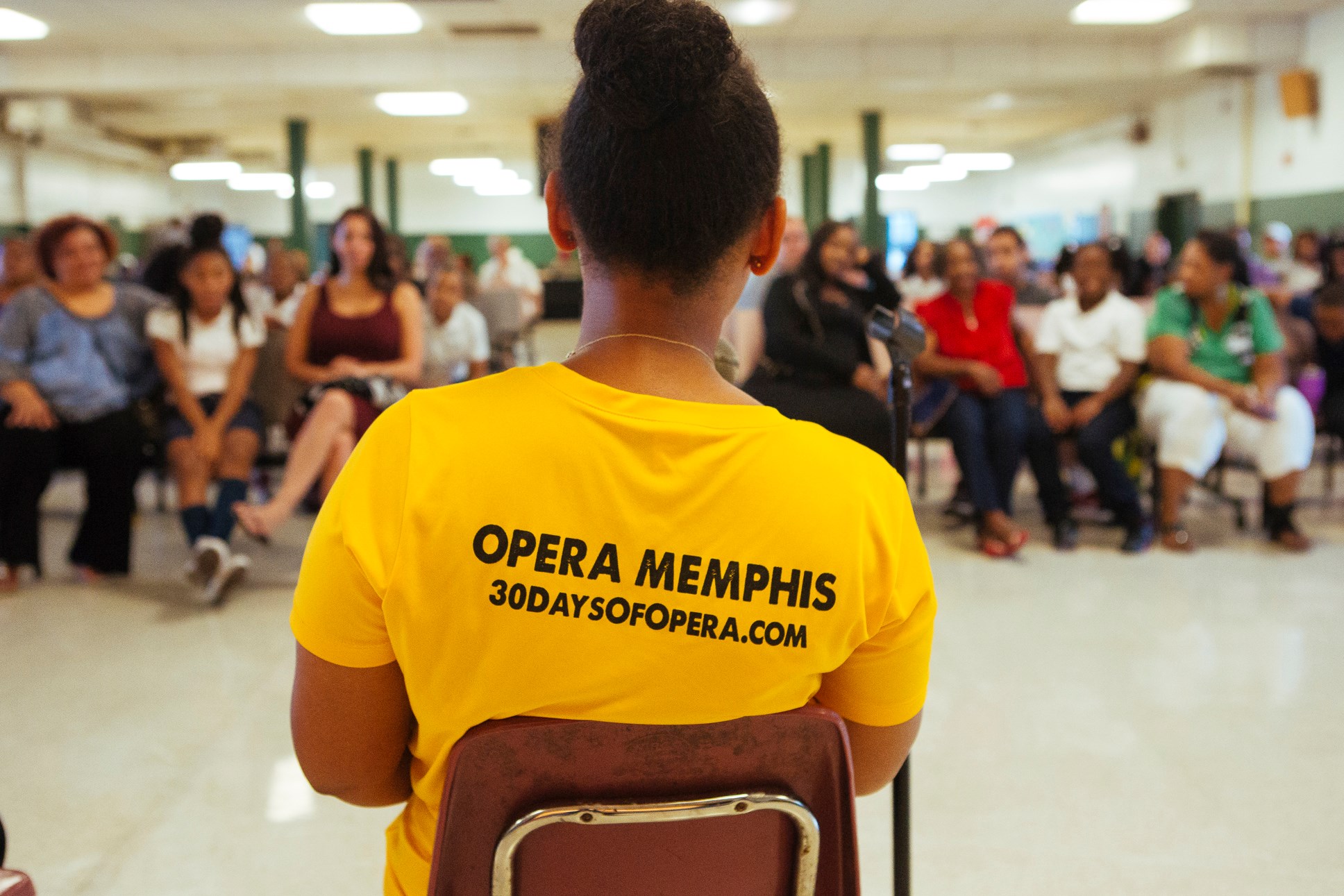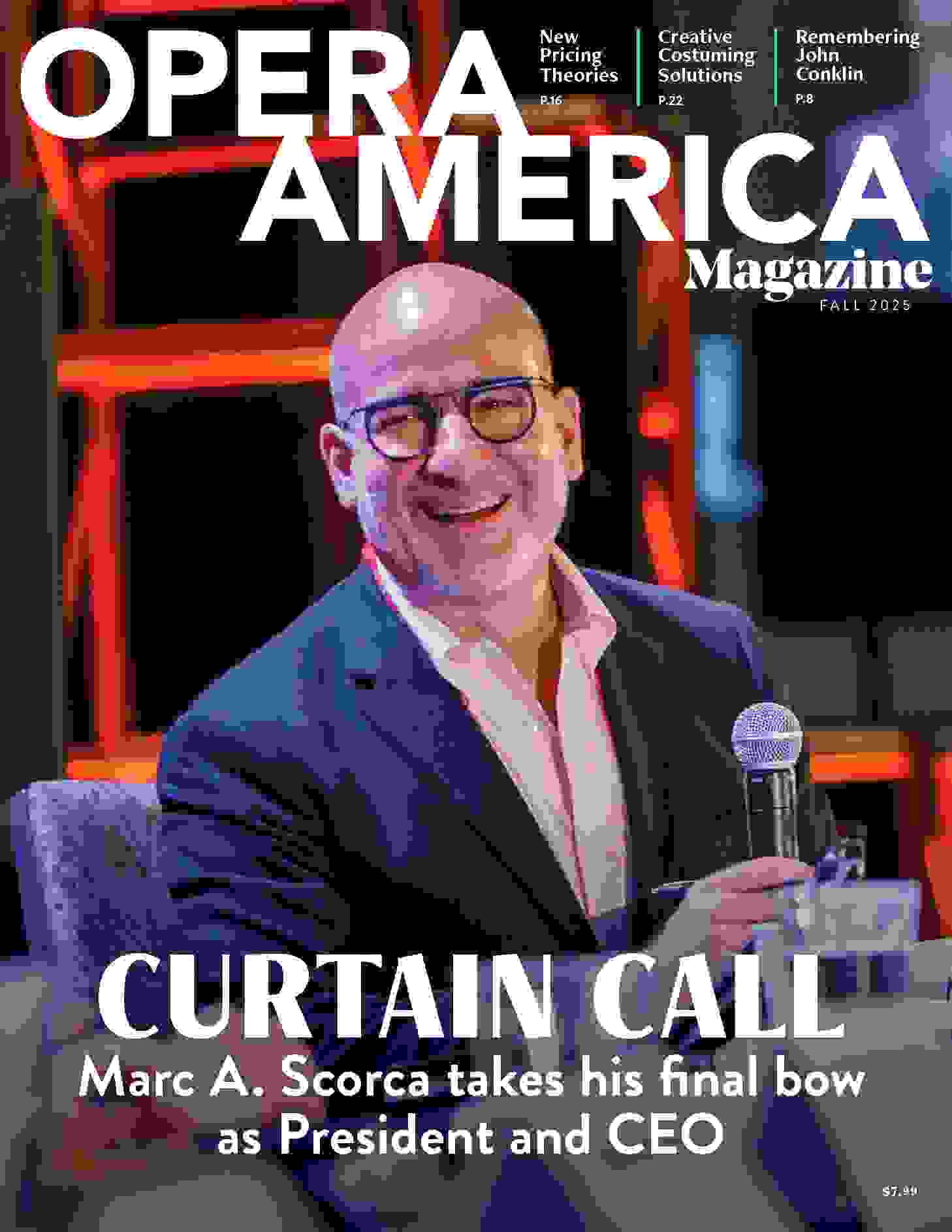Civic Practice — and Your Organization

Eight Steps Toward Successful Connections
The term used to be “outreach,” conceived of as a means of “bringing opera to the people.” Over the past decade, that concept — with its distinct overtone of cultural condescension — has fallen by the wayside. Companies now think of their connections to their surrounding communities as “civic practice,” consisting of efforts to use the field’s assets to form partnerships with community organizations to strengthen civic life.
To better understand the elements of successful civic practice work, OPERA America in 2016 formed the Civic Action Group: a cohort of opera company leaders and community-based arts practitioners using their shared expertise to develop effective policy. This work, which was funded by the National Endowment for the Arts, continued last year when OPERA America convened four regional Civic Practice Workshops — in Austin, Orlando, Memphis, and Omaha — bringing together cohorts with a wide range of experience to discuss civic practice successes and challenges.
The workshops have yielded a new report, Civic Practice in Action. The report provides guidance for opera companies embarking on civic practice, derived from insights that emerged during the workshops. Here are a few of the most salient points.
1) Assess your strengths.
Take a full accounting of your organization’s skills and resources, as well as that of your employees, before entering a partnership. Don’t be overcautious: This is an opportunity to think beyond the services your company traditionally offers toward an innovative use of company strengths. Encourage community partners to do the same.
The process will allow all parties to find the synergies that will help create a successful program.
2) Ask the right questions — and listen!
A successful relationship requires transparency. Before entering a relationship with a potential community partner, ask questions to help determine whether your organization is a good fit for their needs. Rather than imposing set ideas about the initiative, begin from a place of openness and curiosity: Listen to what the potential partner has to say so that the program can fit a specific need.
3) Keep in touch.
Even long-term partnerships have periods of inactivity, and while it may be easy when no work is happening to fall out of contact with a community partner, remaining in touch will give further insights into the partner’s work and needs — and foster a better-informed collaboration in the future.
4) Recognize common challenges.
Despite the best intentions of everyone involved, not all partnerships succeed, nor do all projects within a partnership. Common challenges include setting unrealistic expectations, displaying tokenism in the name of inclusivity, mistaking civic practice for marketing, and imposing “opera standards” on another community.
5) Make civic practice essential.
Don’t “ghettoize” your civic practice. Civic practice should not be limited to your education or community engagement department; instead, it should live within each component of your organization. Everyone, from interns to trustees, needs to engage with civic work. An effective way to make this happen is to create a staff position dedicated to civic engagement and civic practice. By putting logistical and financial
6) Tell opera’s stories.
The opera canon offers myriad parallels with contemporary affairs. Many of its stories revolve around morality tales or highlight issues of class or race. Though specific characters may not be immediately identifiable to operagoers, the archetypes they portray can resonate strongly. New works that address contemporary social issues, and those created by and for the community, offer possibilities for creating even stronger ties.
7) Consider the storytellers.
Opera stories are told not only by the performers seen onstage, but also by the directors, choreographers, designers, and scores of others who put work into bringing a piece to life. While there has been increased effort to make sure the voices onstage are more reflective of a
work’s message, it is also important that the diversity of the creative team reflects the work’s message and is representative of the community.
8) Determine what success looks like
There is no single path toward success in civic practice. Each organization may be in a different place in its practice. Questions to consider: Are members of your organization invested in the work you are doing, and is that enthusiasm shared in all departments? Are trustees asking more questions about your community work? Are partnerships repeating over time? Have requests come in for partnerships with new organizations?
The Civic Action Group and Civic Practice Workshops were supported by Our Town grants from the National Endowment for the Arts.
This article was published in the Fall 2020 issue of Opera America Magazine.





